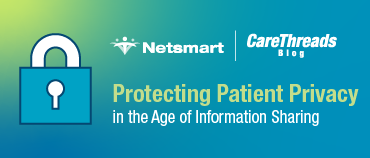Payment models for long-term and post-acute care (LTPAC) providers continue to change at a rapid pace. There is the Patient-Driven Payment Model (PDPM), Accountable Care Organizations (ACOs), Medicaid-managed care, Institutional Special Needs Plans (I-SNPs)… and that’s just the tip of the iceberg.
“We have choices,” said Mark Parkinson, the president and CEO of the American Health Care Association/National Center for Assisted Living (AHCA/NCAL), at the organization’s recent Population Health Management Summit in Washington, D.C. However, many people still sit back and complain about the obstacles they face.
“That’s not a good strategy,” said Parkinson. Instead, “We can innovate and take charge,” he suggested. That motivation is the driving force behind AHCA/NCAL hosting a conference on the topic of population health, which many believe is the future of LTPAC and health care.
The Power of Population Health
Population health isn’t a new idea. However, it’s gaining traction as payors and others seek new ways to manage costs, improve outcomes, and transition patients to the lowest possible level of care more efficiently.
According to the Centers for Disease Control and Prevention (CDC), population health is defined as “an interdisciplinary, customizable approach that allows health departments to connect practice to policy for change to happen locally.” The care model, CDC explains, “brings significant health concerns into focus and addresses ways that resources can be allocated to overcome the problems that drive poor health conditions in the population.”
During the Population Health Management Summit, Parkinson acknowledged that population health is “not a panacea” for every LTPAC provider; however, we need to understand the options and the role that it can and will play moving forward.
During the conference, an impressive collection of key players, industry leaders, and other stakeholders discussed what exactly owners and operators, clinical leaders, and others need to know about population health and how they can begin to apply these concepts for future success.
Addressing Population Health with Technology
There are six critical components of population health:
-
Data Aggregation
-
Patient Stratification
-
Care Coordination
-
Patient Engagement
-
Performance Reporting
-
Administrative/Business
Each of these components requires effective communications and interactions across care settings and between team members.
Unfortunately, there are quite a few silos that exist throughout health care today that hinder such interdisciplinary progress. And to make population health effective, these silos must be removed.
The Role of the Electronic Health Record (EHR)
In many ways, EHR technology is central to breaking down these barriers and reconnecting the various components of health care to provide the level of interaction and interoperability necessary for population health.
Some EHR platform designs make population health management easier and intuitive for LTPAC users, enabling essential, cross-setting communication and promoting a continuum of care between practitioners and facilities.
“Interoperability, communication, and workflow optimization are vital components to how we created and continue to evolve GEHRIMED,” said Cindy Ireland, Vice President of Product Development for GPM, Corp. (the developer of GEHRIMED). “EHRs should allow practitioners to provide the best care possible for their patients and streamline the requirements needed for whatever payment model they are working in.”
Additionally, health plans are becoming more interested in using technology platforms and the data they collect to drive patient management and care planning. In fact, they are intentionally seeking to work with practitioners who can support these efforts.
In the emerging world of population health, your EHR needs to be a reliable source for accurate, real-time data collection and share in efforts, such as:
-
Cohort evaluation: Using data to identify gaps in care
-
Predictive analytics: Using data to help stratify patients into risk level
-
Targeted intervention: Leveraging risk profiles to develop interventions
-
Impact assessment and process improvement: Using data and other information to evaluate return on investment
These capabilities will elevate your value to health plans and allow you to focus on patient care.
Thoughts on Moving Forward in Population Health
Dan Mendelson, the founder of Avalere Health and the associate director for health at the Office of Management and Budget during the Clinton administration, opened the Population Health Summit commending LTPAC leaders for their responsiveness to change thus far.
“It’s really amazing how rapidly this sector has responded to the challenge of value-based care,” he said.
But he also noted that there is still room for improvement from an organizational data and care standpoint.
He suggested that leaders in this sector focus on three specific areas:
1. Learn about Medicare Advantage (MA) and managed care.
Enrollment in these programs continues to grow rapidly. They provide beneficiaries and other stakeholders with a sense of predictability, sustainability, greater security, and knowledge of whom their providers will be.
2. Get to know and partner with health plans.
Health plans are driving payment and delivery reform. They focus on high quality and cost savings. So, show them how you can achieve positive outcomes while also managing costs.
3. Focus on star ratings.
Health plans care deeply about star ratings. They want partners who can help drive higher ratings and keep them high over time. LTPAC providers can help support plan performance on several key star measures by managing chronic conditions, promoting preventive measures like annual flu vaccines, and providing care coordination efforts to improve member experiences with the health plan.
During his speech, Mendelson stressed the importance of post-acute care in the population health equation, especially as managed care plans seek to move beneficiaries to the least expensive site of service as quickly as possible. Skilled nursing facilities are often preferred over acute care in this regard, he noted. What’s more, LTPAC facilities may be less expensive than home care in many situations. The utilization of post-acute care is growing, and it will be a key factor in managing the total cost of care for beneficiaries moving forward.
When it comes to population health, we can’t afford to sit back and watch how the market evolves. We all need to get involved in conversations that determine models and programs we will ultimately come to rely on.
For more information on the Population Health Management Summit, visit https://www.ahcancal.org.







/implementing-ai_gmd_wbn-pt2.png)
